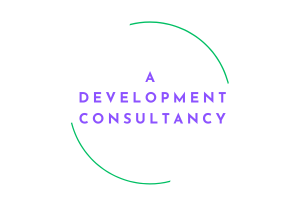Loneliness in the workplace
Loneliness is experienced across all ages. As well as being an undesirable experience in itself, chronic loneliness increases risk of mental and physical ill-health. Addressing loneliness and supporting social connections as part of workplace wellbeing has benefits for both employers and employees. The cost of loneliness to UK employers has been estimated to be £2.5 billion every year. These costs are primarily due to:
- Increased staff turnover (64%, £1.62 billion)
- Lower wellbeing and productivity (26%, £665 million)
- Impact of caring responsibilities (9%, £220 million)
- Ill health and associated sickness absence (1%, £20 million)
By promoting workplace wellbeing, employers can prevent illness, stress fatigue and even workplace accidents. Implementing wellness programmes improves organisational culture and fosters a more positive attitude among employees.
How can you tackle loneliness in the workplace?
We’ve put together just a few ideas of how you can help combat loneliness in your workplace. Talk to your co-workers to see if any of these suggestions would make them feel more included:
- Regular check-in’s: It can be difficult to spot feelings of loneliness among your employees, especially if they’re working remotely. Therefore it’s a good idea to check in with them frequently to see how they’re doing. People can be reluctant to come forward when they’re struggling with a mental health issue but if you can give them a ‘safe space’ to talk in they may find it easier to open up. Assure people that they won’t be judged if they do bring up any concerns regarding mental health.
- Training: Include Mental Health Awareness training* within your wellbeing strategy. Understanding mental health issues and how to handle emotional and difficult conversations give managers the confidence to talk to their people about the subject and signpost them to the right sources of support and guidance.
- Publicise any support available to employees: Raising awareness reduces stigma.
- Organise a social event to bring staff together: This can be in-person or virtually, and can be as simple as a lunchtime walk, end of week happy hour or evening quiz.
- Introduce a buddy system: Pair people up and allow time for buddy catch-ups, so employees always have someone to talk to if they’re struggling. Re-pair people every three months or so.
- WhatsApp/Teams channel: Set up a WhatsApp group or Teams channel for non-work chat
- Mental Health First Aiders (MHFA): If your company has a MHFA, this week is a good time to remind everyone about what they do. If you don’t have an MHFA, consider investing in the training.
- Yearly companywide event: If your company has a high number of remote workers, look into holding a companywide event at least once a year. Everyone needs to feel that human connection. An event that includes time for both work-related and fun activities helps team development and makes your people feel more invested in the company.
- Inclusivity: If your company provides free coffee, snacks or fitness classes to office-based employees, make sure remote workers are given an alternative in order to treat them equally. You could consider providing remote staff with a coffee budget so they can work from a coffee shop for example.
- Balance workloads: Make sure employees’ workloads aren’t more than can reasonably be completed within normal working hours, so that they have time to spend with family or friends outside of work.
- Volunteering: Consider introducing a volunteering policy. The benefits of volunteering can be enormous; not only does it offer vital help to people in need, worthwhile causes, and the community, but the benefits can be even greater for the volunteer. Giving to others can reduce stress, combat depression, keep you mentally stimulated and provide a sense of purpose. Finally, of course, it connects people.
Whatever you decide to do, remember there is no ‘one-size-fits-all’ approach that you can take. If you have built a diverse workplace, you’ll find that each individual has their own feelings towards loneliness. The best thing you can do is get to know your team members and learn what makes them tick. You can then determine the best approach for each of them.
If you’d like to find out more about our Mental Health Awareness training, please contact us.




